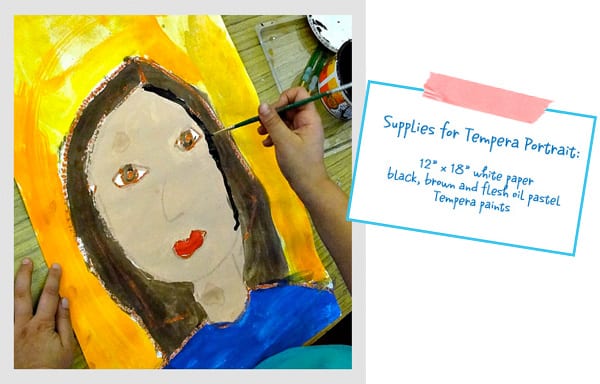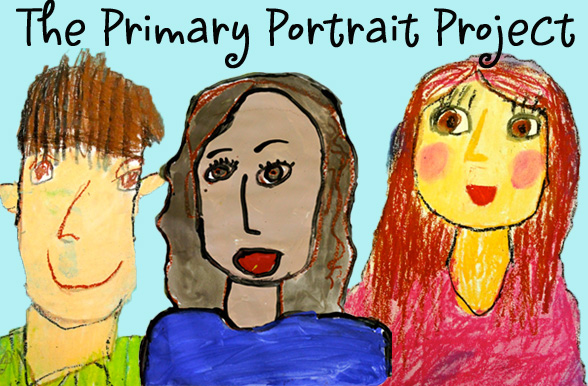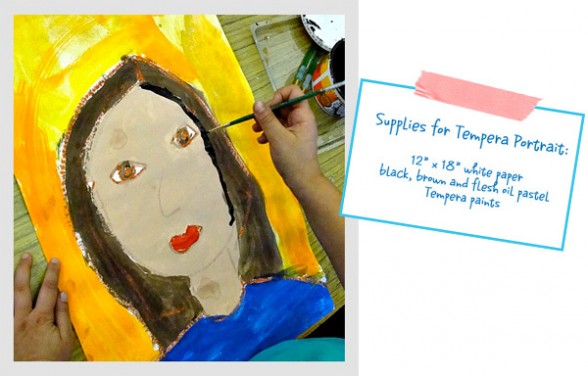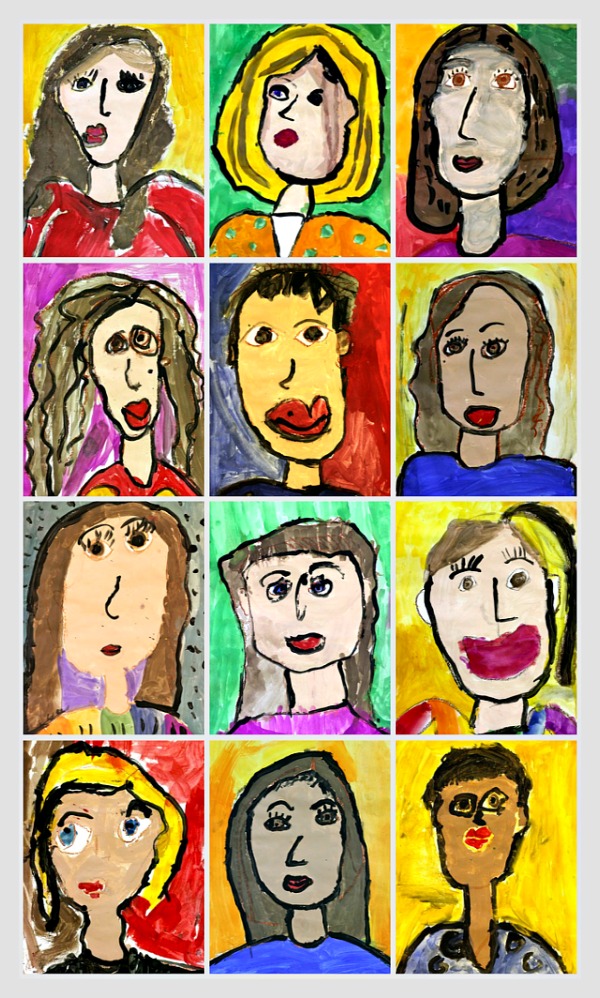This is part three of my quest for determining the best medium for primary portraits. Last week my first grade students created beautiful oil pastel portraits, then another first grade class created their portraits using chalk pastels. Today, my final first grade class used my favorite medium:tempera paints.
Tempera paint has always been one of my favorite mediums. There is something about the intensity of the color that appeals to me. I use Crayola Brand Tempera Paint. It is the brand my school district purchases, so the art room piggy-backs on their order. I also like Blick brands but I tend to order these paints for special colors like magenta and emerald green. A word about Crayola Paints: they are thick. This is good. I believe you are meant to loosen the consistency of the paint to your liking. There is no correct formula, but here are my thoughts: when I’m doing painted paper, I add more water to the paints because I want the paint to flow across the child’s paper. When I’m doing a portrait or other painting lesson, I’ll add less water as the thick paint covers most drawing lines. I used dry tempera cakes for some projects, but when I want my students to be able to mix colors directly onto their paper, liquid tempera mixes best.
My guidelines:
- Two 40-minute class sessions
- 3 first grade class
- 3 different media experiments: chalk pastel, oil pastel, tempera paint
My Goals
- To determine the most successful portrait project for little ones.
My definition of successful
- Accessible to all abilities, including special needs
- Engaged children
- Proud and empowered children
- No crumpled-up paper and unhappy faces
- A portrait that captures the child’s essence
What we did:
Using the same drawing technique as the other two portraits, oil pastel portraits and chalk pastel portraits, children created their drawing with oil pastel. Then I set two tubs of pre-mixed tempera paint on each table; a light flesh color and a darker one. Children painted their skin (face, neck and ears). This was enough for the first day.
On the second day, I set palettes of paint on the table: blue, green, brown, yellow, red and white. From these colors, children could paint eye color, hair color, and mix paints for backgrounds and clothing.
Once everything was painted, children outlined the paintings with black tempera paint using a small brush. If you wait for the paint to dry, another option is to outline with black oil pastel. A bit less messy, but you have to wait for another day.
First Grade Tempera Portraits….
Some thoughts….
Well, what do you think? Which portrait method sounds best to you? If you don’t like to deal with paints, I think the best medium might be chalk pastel. Most children finished their projects and they really seemed to enjoy the process of “painting” with their fingers. Now that I think about it, why wouldn’t they? The tempera portraits are the most familiar to me. It is a bit messy and it does involve prep and clean-up but I really love the results and I know many parents will love having these for their home gallery. Most, if not all the children working with tempera finished within the allotted time frame. I think this is because they are very familiar with tempera paint.
My least favorite? Oil pastel. I can’t tell you how many times I’ve used oil pastel for projects like these. Now that I’ve tried chalk, I really think it’s by far the best medium. So my favorite? Chalk. Hands down!!!
I think the lesson in all this is to step out of your comfort zone and try mediums you may not think you like. I know the kids don’t care. They enjoy the process and it’s rarely about the results. As it should be, right?
This post contains affiliate links
Want a free handout? Download by clicking the yellow button below and we’ll send you a free lesson guide on K-6 portrait making!
















Hi,
Thanks for your ideas and reflections. I’m wondering if you have some tips for teaching grade ones how to manage their painting supplies and what you find most effective for organizing paint supplies (and cleaning up afterwards) with these young ones.
Thanks so much for any tips you can send my way!
Well, it’s really no different that with any other grades. Paint is always shared, as is water containers. Sometimes I put brushes directly into tempera paint pots and sometimes I put the brushes in water. It really depends on the lesson and which paint I’m using. Kids clear the water containers and place on my counter. I refill and wash brushes. Does this help?
Hi teacher
Your idea it’s very good
I liked this projects